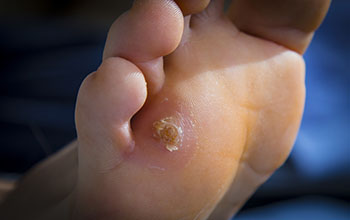Connect With Us
Corns

Corns & calluses are thickened areas on the skin’s surface that can be irritating and painful. They are commonly found on the feet, and can be flat or raised. They develop where there are areas of pressure or friction, such as on the little toe when it rubs against shoes, or on the ball of your foot.
The best treatment for a corn or callus varies from person to person and is best determined by a podiatrist. People with diabetes should consult with a podiatrist immediately if they have developed a corn or callus, as these can potentially develop into more serious conditions if left untreated.
Orthotics or inserts may help with treating corns & calluses. Inserts fit right into the shoes and adjust the way the wearer walks and bears weight. Properly-fitting orthotics can help reduce friction and pressure to problem or prominent areas of the foot, which can in turn help reduce formation and exacerbation of corns or calluses. Additional padding or cushion inserted into shoes to cover painful areas prone to corns or calluses is also a common treatment method. Using a good moisturizing cream on a daily basis to problem areas can also be helpful.
Surgery is rarely used to treat corns but does occur on occasion. Surgery in this instance deals with the underlying issue that causes corns to develop. During surgery, the prominent bone is typically shaved and any abnormality corrected, thus reducing the amount of friction and pressure that occurs during weight-bearing and walking.
While there are many ways to prevent corns or calluses, it is best to consult a podiatrist with any questions you may have.
